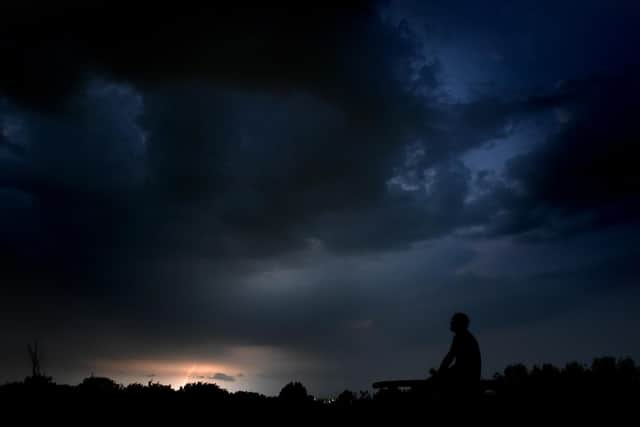UK could experience more ‘tropical nights’ as heatwaves become more common
and live on Freeview channel 276
The Met Office said a warming climate will lead to more heatwaves in the future, as well as hotter evenings, which could begin to impact people’s health.
Four so-called tropical nights have been recorded in the UK so far this year, with three occurring since August 8 and one recorded on June 25, Met Office spokeswoman Nicola Maxey said.
Advertisement
Hide AdAdvertisement
Hide Ad

Ms Maxey told the PA news agency: “With climate change and a warming climate, we will see more tropical nights.
“There’s no doubt about that.
“Heatwaves are more likely, and so as well as more days we are going to see warmer nights.
“From a health point of view, the warm nights become an issue, because if you have a hot day and cool night, then people who have long-term health problems and the elderly have a chance to cool down.
Advertisement
Hide AdAdvertisement
Hide Ad“But if it’s constant and you don’t have that rest-bite, it becomes more of an issue, I understand.”
Between 1961 and 1990 there were 44 nights where temperatures did not drop below 20C, although these were mostly associated with the heatwaves in 1976 and 1983, Ms Maxey said.
There have been a further 84 tropical nights recorded since 1991, with 21 of those occurring since 2008, five taking place in 2018 and four in 2019, she added.
This month’s heatwave is due to continue over the coming days, with temperatures forecast to remain in the mid-30s in the south east of England on Wednesday.
Advertisement
Hide AdAdvertisement
Hide AdHowever, thunderstorms and heavy rain are also expected to bring further flooding to parts of England and Scotland.
Ten properties in Lancashire were affected by flooding on Tuesday following overnight storms, the Environment Agency said.
The rainfall caused the Burrow Beck waterway in Scotforth, south Lancaster, to rise by just under one metre in “two hours and 45 minutes”, the agency’s flood risk manager Andy Brown said.
The Environment Agency said further heavy showers could see more flooding in “mostly urban areas” of England between Tuesday and Friday, with some homes being affected.
Advertisement
Hide AdAdvertisement
Hide AdA yellow weather warning for thunderstorms remains in place for most of the UK, excluding Northern Ireland and west Scotland, until Thursday evening.
The Met Office said up to 40mm (1.6 inches) of rain could fall within an hour in parts of north east England, and up to 80mm (3.1 inches) in three hours.
However it said that most areas are expected to remain dry, with temperatures expected to remain in the mid-30s on Wednesday.
The Environment Agency has issued five flood alerts, meaning flooding is possible, for parts of Birmingham and its surrounding districts.
Advertisement
Hide AdAdvertisement
Hide AdIt comes as Lancashire Fire and Rescue Service said it went out to more than 30 flooding-related incidents in Lancaster, Warton, Kirkham, Hesketh Bank and Tarleton on Monday night and Tuesday morning.
No injuries were reported, and a spokesman for the fire service said plans were under way to prepare for more storms expected on Tuesday evening.
Flood alerts have been issued for 17 locations in Scotland, with one also current for the Vyrnwy catchment area in Wales.
Some heavy showers and thunderstorms are expected for the North of England on Tuesday night, in what will be a warm evening for most parts of the nation.
Advertisement
Hide AdAdvertisement
Hide AdTemperatures are likely to remain in the mid-30s in the south east of England on Wednesday, potentially reaching 37C (98.6F) in some parts of the region, the Met Office said.
The mercury is forecast to fall slightly to 30C (86F) in London on Thursday, before dropping again to around 26C (78.8F) on Friday, she said.
It comes as temperatures reached 35C (91.4F) in Heathrow, London, on Tuesday afternoon.
Where skies are clear, stargazers will have the chance to view the annual Perseid meteor shower this week.
The meteors, mostly no bigger than a grain of sand, burn up as they hit the atmosphere at 36 miles per second (58kps) to produce a shooting stream of light in the sky.
Comment Guidelines
National World encourages reader discussion on our stories. User feedback, insights and back-and-forth exchanges add a rich layer of context to reporting. Please review our Community Guidelines before commenting.